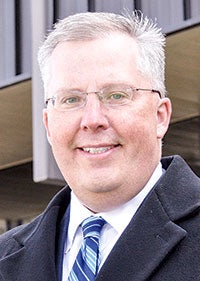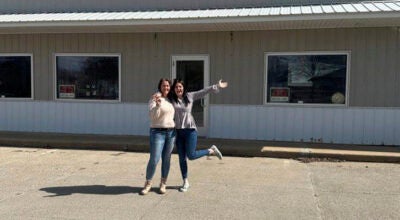CGMC looking to Legislature to aid in economic recovery
Published 6:50 am Saturday, January 30, 2021
|
Getting your Trinity Audio player ready...
|
LGA, child care, housing and water infrastructure top priorities
ST. PAUL – The Coalition of Greater Minnesota Cities (CGMC) outlined its top legislative priorities for 2021 during an online press conference on Friday.
As the state struggles with the COVID-19 pandemic, Greater Minnesota city leaders are calling upon Gov. Tim Walz and the Legislature to focus on key priorities that will help set the stage for economic recovery: Local Government Aid (LGA), child care, housing and water infrastructure. It’s a daunting task considering the state is facing a $1.3 billion deficit.
“The pandemic has taken a toll on our community,” said Greg Zylka, mayor of Little Falls and president of the Coalition of Greater Minnesota Cities. “Some segments are still really struggling, and that pain has ripple effects across the city. As mayor, it’s heartbreaking because you want to be there for everyone.”
As cities continue to deal with the uncertainty of the pandemic, the CGMC is emphasizing that reliable LGA funding from the state is more important than ever.
“The single most important thing the legislature and governor can do this year to help Greater Minnesota communities is ensure that LGA is paid on time and in full,” said CGMC Executive Director Bradley Peterson.
Zylka said that LGA accounts for 40 percent of Little Falls’ general fund.
“If the state were to cut LGA, the only way to remedy that without cutting services like police and fire is to tax the heck out of our communities,” he said. “Our residents and businesses are hurting enough right now.”
The CGMC is also urging legislative help with child care and housing, the lack of which CGMC leaders say is prohibitive to economic development.
“The economic recovery cannot happen unless workers have a place to live and have someone to take care of their children,” Peterson said.
According to First Children’s Finance, Greater Minnesota was short 39,000 child care spots as of summer 2020. This need is expected to grow as more parents return to the workforce.
“Even before COVID, the child care shortage was a significant impediment to economic growth in our city,” said Austin City Administrator and CGMC Board Member Craig Clark. “The pandemic has made it even harder for child care providers to stay in business. In order for the economy to pick back up and our businesses to thrive, parents need to have reliable child care.”
Clark noted that the First Children’s Finance report indicated that Austin is in need of 810 child care slots.
Peterson said the CGMC is advocating for several legislative proposals this session that aim to stabilize the child care industry through support services for providers and expand access by creating new child care businesses. It is seeking $20 million for grants to construct new or expand existing child care facilities in Greater Minnesota, as well as additional funding for Department of Employment and Economic Development child care grants and the Minnesota Initiative Foundations’ (MIF) child care initiatives.
The housing shortage is also a concern across Greater Minnesota, where the realities of the market make it difficult for developers to get the same profits that they can achieve by building in the metro area.
Clark noted that despite the city’s housing tax abatement program and other local efforts, only seven new single-family homes were built in Austin in 2020.
“We need at least 90 to replace our aging housing stock,” he said.
Peterson said the CGMC is pursuing legislation to encourage construction and increase availability of housing across Greater Minnesota. Proposals include the creation a new grant program to help cities rehabilitate dilapidated homes, state funding for critical public infrastructure such as sewer lines and streets that are needed to build new housing developments, and additional funding for the existing Workforce Development Grant Program and policy changes to make the program work better for Greater Minnesota communities.
Despite the most recent bonding bill allocating $269 million for clean infrastructure, state agencies have determined that more than $11 billion is needed over the next 20 years to fund drinking water and wastewater infrastructure projects statewide. According to Clark, Austin is currently seeking an additional $13 million to put toward the $78 million cost of replacing the city’s current wastewater treatment plant, which does not meet recent Minnesota Pollution Control Agency regulations.
“We are not shying away from our local costs, but our residents and businesses can only take on so much, especially as they deal with the fallout from COVID,” Clark said, adding that sewer rates increased by 25 percent in 2018 and have gone up an additional 7 per year, a trend that will continue through 2023 for an eventual and total increase of 75 percent.
Little Falls is in a similar position as it has a $25 million wastewater treatment facility project of its own. Zylka noted that had the city not received funding through state grants, it would have been forced to raise sewer rates by 250 percent to cover costs.
“Small cities simply can’t afford to do these projects without help from the state,” he said.
Peterson said the CGMC is urging the legislature to pass a bonding bill with at least $100 million for clean water infrastructure grant and loan programs administered by the Public Facilities Authority.
“Some legislators have balked at the idea of passing another bonding bill, but the truth is the need is so great that the state can’t afford not to fund more projects this year,” he said. “If the Legislature fails to pass a bonding bill this year, it will only delay projects and drive up costs.”







